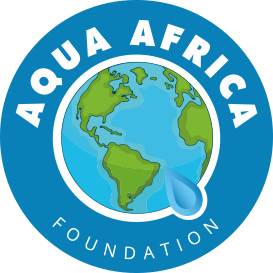People living in northeastern Ohio and along the shores of Lake Erie have heard talks about how the local water bodies are polluted, serious, and unsafe to swim in as they grow up. This area is considered to be one of the most severely polluted rivers in the United States for many years. In 1969, the Cuyahoga River caught fire after dumping sewage and industrial chemicals into Lake Erie, which led to the establishment of the U.S. Environmental Protection Agency (EPA). Many people swim in Lake Erie or similar waters throughout their lives. Most of the drinking water around my hometown comes from lakes.
There is no doubt that countless waters across the country and northeastern Ohio are polluted, but this does not prevent Lake Erie from receiving more than 11 million visitors each year. Do these people put themselves at risk of exposure to harmful chemicals?
You may be wondering what makes this contaminated water so dangerous and ask yourself: “Am I putting myself at risk of exposure to harmful chemicals?” Professors and post-doctoral researchers from the school are studying our water possibilities. What chemicals are present, where they are, and how long they can last, are studying rainwater pollutants, and how this might affect our understanding of national water pollutants. This work is being carried out by the Faust laboratory team in collaboration with Dr. Rebekah Gray and is asking important questions about which chemicals are found in rainwater and how they can persist. Dr. Faust, a trained atmospheric chemist, said that she believes that “precipitation research will be an important area where Worcester students can contribute to our understanding of the transport of chemical substances in the environment.”
The source of chemical containments
Dr. Faust uses high-resolution mass spectrometry instead of typical measurement methods, using airplanes and high-tech equipment at the atmospheric level to model the origin and movement of the air on the days of precipitation events to help track environmental pollutants in the water source. By understanding the source, we may be able to better understand the persistence and spread of certain chemical substances, which may be harmful to us and the environment. Although her work began with the study of metolachlor (a herbicide commonly used in grasses), Dr. Faust’s current work focuses on identifying and quantifying perfluoro and polyfluoroalkyl substances (PFAS) and identifying rainwater Insecticides. P.F.A.S. is used to make coatings for oil-resistant consumer products, such as fast food containers/wrapping paper, non-stick cookware, and waterproof clothing. If you look out of the car window on the highway, you will most likely see P.F.A.S. on the side of the road.
Forever chemicals
As we all know, pesticides and fast food containers are scattered in the environment. According to Dr. Faust, P.F.A.S. are called “forever chemicals” because they can exist for a long time and persist in the environment.
Why should we care about forever chemicals?
They have dangerous effects on human health, they accumulate on one’s body and are everywhere. In her independent research, now graduated student Kyndalanne Pike, she found P.F.A.S in water. Among all the locations she examined, the highest concentration is in Worcester, Ohio, with more than one part per trillion of the EPA’s health recommendations. Dr. Rebekah Gray, a postdoctoral researcher in the Worcester Faust team, knows that our rainwater contains potentially harmful chemicals, and he asked how long these chemicals can actually last in our atmosphere.
Dr. Gray has been analyzing precipitation samples dating back to 2018 and confirmed the presence of nearly 20 pesticides.
The more common ones include atrazine (mainly used in cornfields and golf courses to reduce weeds), alachlor, and simazine, both of which are used to control weeds. A more unusual and exciting discovery is the organophosphorus pesticide Dimefox, which, together with D.D.T., was discontinued by the World Health Organization in the early 2000s.
If you have heard of D.D.T. and D.D.T.-inspired by Rachel Carson’s Silent Spring, you know that chemicals like D.D.T. may cause great harm to the environment and may also cause cancer to humans. Although this discovery is nerve-racking, it reminds us of the importance of studying how long these chemicals can stay in the environment, especially if we still find them in water today.
Why is there such a large amount of these chemicals in Ohio? This has been worrying us.
with information from: https://thewoostervoice.spaces.wooster.edu/2021/11/12/chemical-containments-in-our-water-the-silent-killer/


